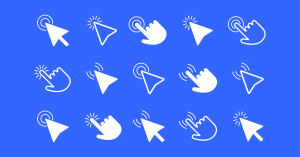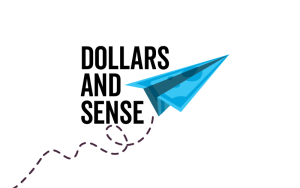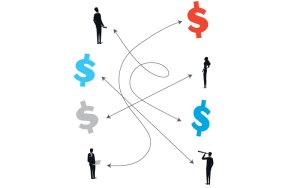Are you getting a lot of traffic to your website, but not a lot of leads? You’re not the only one.
While high traffic is a great indicator of consumer interest in your business, it’s not the only metric that counts. If visitors don’t take action once they’ve landed on your page, then you may be doing something wrong.
Maybe your content isn’t as helpful or relevant as you thought it was? Maybe your site’s navigation is a bit too complex? Maybe your offers aren’t enticing enough? These are all aspects to consider.
Here are some possible reasons why visitors aren’t clicking your CTA and what you can do about it.
But first, what is a CTA? A call-to-action (CTA) is a button or link text that drives a website visitor toward a desired action – like filling out a contact form, or downloading a content offer. CTAs should be bold and noticeable, but the form they take – button, link text or image – should be tested to determine the most impact for your audience. In this article, we mostly discuss buttons, but CTAs can take a variety of shapes and formats.
Related: 7 Emerging Trends in Web Design & Development
It Isn’t Helpful
You could have the best blog and website content there is, but if the CTA you’ve included within that content isn’t helpful, then few people are going to click it. Essentially, you want the call to action to be relevant to the content. For example, if a travel company has a blog post about the top five US national parks, which is the more helpful CTA: “Download: US National Parks Map & Tips” or “Get the Island Getaway Guide.”
It Isn’t Compelling Enough
If your CTA button isn’t, in itself, an argument for why people should click on it, then don’t expect a lot of conversions. Users need a reason to perform the action you want them to. Make sure to stress the urgency of the offer or the added value of clicking that button. “Claim Your Limited Time Discount” is more urgent and compelling than “View Current Deals.”
It’s Too Complicated
Maybe your audience is clicking on your CTA button, but they’re just not following through on the landing page. If your call to action involves navigating to multiple pages, your lead collection form is too long or visitors are forced to take too many steps until they reach the final point, then it might be a good idea to simplify the process. Online users aren’t known for their patience, so don’t drag them along. Make the conversion process as easy as fast as possible.
 Yganko/Shutterstock.com
Yganko/Shutterstock.com
It Isn’t Visible
Making your CTA button visible doesn’t mean making it big and loud. Prospects land on your page because they are attracted by your content, not your flashy CTA buttons. If you want to draw their attention to the CTA button, the best way to do it is with thoughtful placement. Where will their eyes be drawn? Do you get more conversions by placing the CTA in the header? At the end? Maybe in a sidebar? It may take some testing to find what works best, but the ROI will be worth it.
It Looks Bad
Website aesthetics count for quite a bit, so your call to action shouldn’t be an exception. Your audience has to navigate a seemingly endless stream of content every day, and they are considering every detail to ease their decision-making. If your button doesn’t look appealing, then they will most likely ignore it. Try testing different colors, fonts or shapes to see which one performs the best.
How to Improve Your CTA’s
All is not lost! There are a few things you can do to make your CTA button more effective:
- Make it obvious your text CTAs are clickable. Sometimes you don’t know a text link is a text link until you accidentally scroll over it.
- Write brief, compelling CTA copy. It’s always best to be direct with your CTA text. Tell them exactly what to expect when they click.
- Place your CTA’s carefully. Choose a focal point on the page that will receive a lot of views.
- Use words that convey the notion of time to create urgency.
- Give them an incentive to click, such as a free trial, a discount or a premium content offer.
- Test it before you launch it. It’s really not an exact science, so it’s best to test a couple of versions on a smaller scale and work from there.
Your call to action should be able to turn visitors into qualified leads, and it takes a little elbow grease to get things running smoothly sometimes. If your CTA button isn’t performing as great as you’d hoped, contact us now, and we can tell you why.
Pssst! Here’s our CTA – give it a click!




